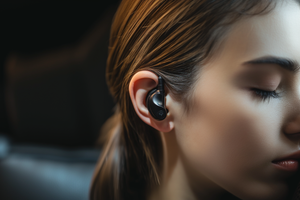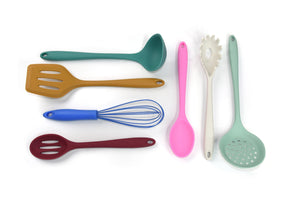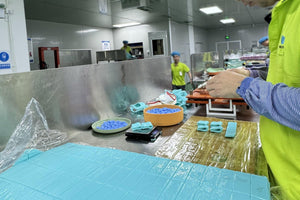In the fast-evolving world of hearing technology, Liquid Silicone Rubber (LSR) has emerged as a preferred material for many hearing aid manufacturers and audio tech brands. Its unique combination of biocompatibility, flexibility, and durability makes it ideal for the complex and sensitive requirements of hearing devices.
Whether for medical-grade hearing aids or consumer in-ear monitors, LSR is redefining how hearing components are designed, worn, and experienced.
What Is LSR (Liquid Silicone Rubber)?
LSR is a two-part, platinum-cured silicone that is injection-molded into precision components. It offers:
- ✔️ Excellent thermal stability and weather resistance
- ✔️ High tear strength and elasticity
- ✔️ Long-term biocompatibility
- ✔️ Precise molding capability for micro-components
These qualities make it a natural fit for wearable technologies—especially hearing devices where fit, safety, and acoustic performance are critical.
Benefits of LSR in Hearing Components
🔹 1. Skin-Safe and Hypoallergenic
LSR is biocompatible and suitable for prolonged skin contact. It won’t irritate sensitive skin inside or around the ear, even after extended wear.
🔹 2. Flexible and Comfortable Fit
Its soft, flexible nature allows for:
- ✔️ Ergonomic shaping that conforms to the user’s ear canal
- ✔️ Custom-fit ear molds for improved comfort
- ✔️ Minimal pressure points or discomfort, even with all-day use
🔹 3. Superior Acoustic Seal
A good seal is essential for:
- ✔️ Blocking external noise (passive noise isolation)
- ✔️ Preventing sound leakage
- ✔️ Enhancing sound clarity
LSR components can be molded to provide a precise seal that improves overall audio performance.
🔹 4. Durability and Sweat Resistance
Hearing aids and earbuds face moisture, oils, and daily handling. LSR is:
- ✔️ Resistant to sweat, UV, and body oils
- ✔️ Tear-resistant and dimensionally stable
- ✔️ Able to withstand frequent cleaning and long-term use
🔹 5. Miniaturization Possibilities
LSR’s flow properties and mold precision allow manufacturers to create:
- ✔️ Tiny, detailed parts for micro hearing aids
- ✔️ Thin walls for lightweight and low-profile components
- ✔️ Integrated features like acoustic dampers, seals, and valves
Common LSR Components in Hearing Devices
- 🎧 Custom-fit ear tips and ear molds
- 🎧 Sealing gaskets for in-ear devices
- 🎧 Protective covers and grips
- 🎧 Shock-absorbing internal parts
- 🎧 Acoustic dampening membranes
Whether for BTE (behind-the-ear), ITE (in-the-ear), or CIC (completely-in-canal) styles, LSR can be tailored to meet a variety of hearing device designs.
Conclusion: The Future of Hearing Tech Is Soft, Safe, and Silicone
As hearing devices become smaller, smarter, and more discreet, materials like LSR are playing a vital role in enabling comfort, reliability, and acoustic performance.
For manufacturers, LSR offers a reliable path to producing high-quality, user-friendly components that meet both medical and lifestyle expectations. For end-users, it means better comfort, sound quality, and durability.
Let’s Develop Your Next LSR Hearing Component
We specialize in OEM silicone molding solutions for hearing aids, wearables, and audio technology. Whether you're developing a next-gen IEM or a discreet medical hearing aid, our team can help bring your vision to life.
About Author
We are dedicated to pushing the boundaries of possibility in silicone product manufacturing and our extensive range of inhouse designs and molds across baby, pet, homewares and more allows companies to customize and create products specific for their brand and market needs.
Whether you are looking for a company to bring your ideas and brand to life or looking for ready to go items with packaging and branding, WOLIFE is ready to help your business grow.
WOLIFE looks forward to collaborating with you!


 Using LSR in Hearing Components
Using LSR in Hearing Components Why Silicone Cooking Utensils and Baking Trays Don’t Melt – The Science Explained
Why Silicone Cooking Utensils and Baking Trays Don’t Melt – The Science Explained 10 Creative Products You Didn’t Know Could Be Made with Silicone
10 Creative Products You Didn’t Know Could Be Made with Silicone Common Quality Control Challenges in Silicone Manufacturing
Common Quality Control Challenges in Silicone Manufacturing